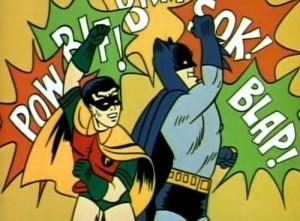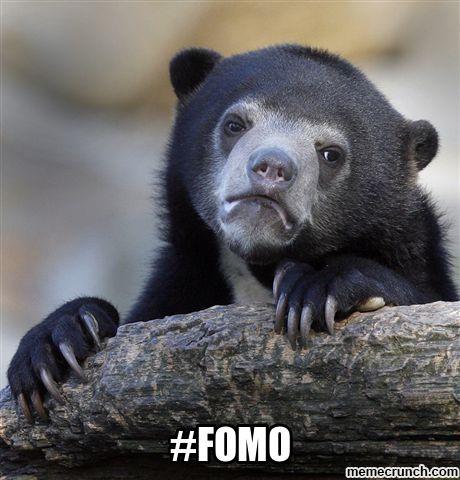Read to the end of this blog post to receive $1 million!
Oh, if only that were true. I’d probably read through more than once. However, now that I have you thinking about the proper way to motivate someone, I’d like to share some tips on how to craft a clear and engaging call-to-action (CTA) for your marketing campaigns.
What Is a Call to Action in Marketing?
In marketing, your call to action is the part of your advertisement that tells your target audience what they should be doing once they click on your PPC ad and hit your website or landing page. The simplest example of a call to action is “Buy now!”
The more information you can provide your potential customers with your CTA, the better it will be for all parties involved. You can let your audience know what to expect when they click on your ad, and you can help dissuade the wrong users from clicking by means of a clear and direct message. While it is also important to understand what industry-specific phrasings or messaging your potential customers would respond well to, the CTA tips below are equally valuable.
1. Use a strong command verb to start your CTA
It’s all about being clear and concise with your CTA. You don’t have a ton of space in your ad to get your point across, with the character limit set at 35 characters per description line, so it is important to get straight to the point. Let your audience know exactly what you want them to do, and don’t dilly dally – start the CTA button with the desired action.
- Run an e-commerce website? Start your CTA with words like “buy,” “shop,” or “order”
- Promoting a newsletter or white paper? Start your CTA with words like “download” or “subscribe”
- Want someone to request more information? Try “fill out a form for…” or “find out how…”
Let’s go back to that white paper example. If you’re a marketing agency promoting your latest tips and insights, you want to be sure to that your audience understands exactly how to access that white paper. If your CTA read something like “Our latest white paper is available” you may not get a great click-through rate, as folks might not be sure where or when they can expect to get their hands on it. A call-to-action such as “download our white paper today!” is much more direct and informative, which should help improve CTR.
2. Use words that provoke emotion or enthusiasm
You want to be able to elicit a strong response from your audience as a result of their enthusiasm. If your CTA is enthusiastic, then your audience will be enthusiastic too. Take a CTA like “buy now and get 50% off!” – not only are you providing them with a massive benefit, but who wouldn’t be thrilled to get their order for half off?
For someone looking to book a trip with their family, a CTA such as “plan your dream vacation today!” will excite them about the notion of a family trip and make them eager to click on your ad. A small, yet effective element here is adding an exclamation point to the end of your CTA in order to evoke that enthusiasm. It makes your CTA pop, and gives it a little extra kick.
Look how much more exciting exclamation points make everything
To find emotional words and phrases to use, check out these 120 words & phrases for marketing with emotion or maybe these 273 emotional trigger words.
3. Give your audience a reason why they should take the desired action
In other words, what’s in it for them? Will it help them do their jobs better, lose weight, or save money? This will tie in heavily with your value proposition, or unique selling point (USP). Your USP is arguably one of the most important pieces of acquiring new leads, so creating a nice USP/CTA mash-up is a great way to increase clicks.
A good example of a call to action here would be something like “call today to schedule your free consultation!” Not only have you stated the action you want the user to take (call today), but you have also provided them with a reason why they should take that action (a free consultation).
4. Take Advantage of FOMO
This is actually one of my favorite tactics when it comes to a successful CTA. Fear of missing out, otherwise known as FOMO, is an extremely effective motivator. When people think they might lose out on an opportunity that might not come around again, they’ll be mighty quick to hop on the bandwagon.
One of the best uses of FOMO in your CTA is to mention a sale or promotion that your company is holding, and which won’t last forever. You probably get emails with this sort of messaging all the time, I know I sure do. I’m talking about messaging like “Shop today! Sale ends on Monday,” perhaps during a three-day weekend. Or even “buy now while supplies last!” during the holiday season. It’s tough to ignore a prompt like that, especially during a time-sensitive, under-the-gun type of situation (e.g. the Christmas season). Similar to provoking enthusiasm as we discussed earlier, provoking fear of missing out in your CTA is sure to get you some additional clicks.
One is the loneliest number that you’ll ever do
5. Know your devices
Creating a killer call-to-action is important, that’s no secret. But I also urge you to consider customizing your CTA based on the device being used by your audience. Google considers desktop and tablet as the same device, as the screen sizes are roughly the same, and people use them for search in similar scenarios. An example of this would be a person sitting on the couch at night, who sees an ad on TV for a product they’re interested in. The next thing they’ll probably do is grab their laptop or tablet and search for more information on it.
However, mobile devices tend to have different user behavior and search intent than desktop/tablets, making it prudent to tailor your CTA based on device. Users who search for something on their desktop or tablet are typically still doing their research, and are not quite ready to commit. But users searching for something on their mobile phone are often looking for “instant gratification” or fast results.
Someone could be walking down the street when they see an ad on a moving bus, and whip out their phone and quickly search for what they saw before it leaves their brain. Their search will also likely result in a phone call to complete the desired action, rather than browsing a website. My advice is to create a more phone call-centric CTA for your ads that appear on mobile devices. You could try something like “call now to get started” or “call us today for more information,” and that should help guide your target audience to take the action you want them to take.
There are two ways you can make this tactic even more effective:
- Google gives you the ability to set a mobile preference for your ads, which allows you to designate certain ads to only appear for searches completed on mobile devices. With this option, you can focus your CTA on generating more phone calls.
- You can also enable call extensions, which allow you to display your phone number alongside your ads. This option is available for all devices, and I strongly recommend that you take advantage of it, but Google automatically adjusts the way your call extensions are displayed on mobile searches. Instead of your number appearing, a small “Call” button will be display, allowing for one-touch dialing. This is what is known as Google’s “Click- to-Call” function.
Google’s Click-to-Call button appears on mobile searches
6. Don’t be afraid to get a little creative
It’s important that you keep your CTA’s fresh, much like you should with your ad copy in general. A good, old-fashioned A/B test is a great way to identify which CTA’s bring you clicks, and which CTA’s bring you frowns. While your tried and true calls-to-action like the ones we’ve already discussed are always good to use, you really never know how they’ll perform in your account until you actually use them.
PPC is definitely a game of trial and error (which is why it can be frustrating!), and your calls-to-action are no exception to the rule. Something could look great on paper, or may sound great when a colleague recommends it to you, but the only way you’ll absolutely know for sure if something will work for your account is if you test it out. Your target audience may not respond well to what could be considered a “surefire CTA,” which is enough to make you pull your hair out. I recommend not only testing different CTA’s, but being creative with them too. If your target audience isn’t responding well to your ads, you might as well try to think outside the box a bit!
Elisa Gabbert shared some examples of creative CTAs in a blog post if you are looking for some additional inspiration, while Dan Shewan examined what makes some call to action examples so effective in a separate post, so do your research!
7. Use numbers when possible
We consumers respond well to seeing numbers such as pricing, discounts, promotions, incentives, etc. It helps us to determine whether or not it’s worth splurging on items we desperately want, but probably aren’t essential to everyday life. So when the opportunity arises, why not appeal to your target audience that way?
I am always a big proponent of including pricing information in your ad copy in general, and that includes your CTA. If a user sees your pricing information in your ad, and decides to click through to your site, then you know they are still interested in the product or service you are offering. Now you know you have yourself a valuable click, and an increased chance at generating a conversion. But, if you don’t include your pricing information in your ads, someone may click through to your site, excited about your products/services, but then get scared off by your prices; now you have yourself a less than desirable situation. This leads to the dreaded wasted spend in your account, and who wants to deal with that?
Try experimenting with your pricing information in your CTA, as well as any other applicable numerical information. A CTA such as “Shop today for TVs under $300!” not only shows a user how little they will pay for a TV, but it also hits on the FOMO element as well (pretty sneaky huh?). If you are running a special promotion for shipping, you could try something like “order by Sunday for 1-day shipping.” Maybe you are an auto body shop looking to incentivize your audience with a discount; your CTA might look something like “Book today! 15% off your next visit.”
<<Want more help with your ads? Get our (free!) All-Star Playbook to Online Advertising>>
Honorable mention: Use crappy language
This doesn’t make the top 7, as it can be a little risqué, but it can also be pretty effective in catching someone’s eye. I don’t always recommend trying this, as it can be tough to pull off, but sometimes using negative words can motivate a person to change something they are self-conscious about. For example, if I was on Google looking to lose weight and saw a call-to-action such as “end your crappy diet today,” I might just want to click. Sure, it’s a bit brash, which is why I recommend using this technique sparingly, but it definitely commands attention.
Another example might be if I was looking to fix the brown patches in my lawn. If I was perusing Google and saw an ad with a CTA like “your yard sucks, let us fix it,” not only would I probably chuckle, but I would also probably click – just to see exactly what that lawn company could do for me. You’re walking a fine line with this technique, but it can pay off.
Do you have a preferred call-to-action, or perhaps one that surprised you with how well it did? What about one that you were hoping would perform well but ended up bombing? I’d love to hear about it, so feel free to sound off below!







0 Comments